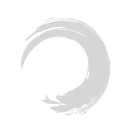Zao Jiao (Chinese Honeylocust Fruit)
Herb 7 of 9 in Warm Herbs that Transform Phlegm-Cold
Buy This Herb
Get free shipping from
our partners at CHD
our partners at CHD
Chinese Herb Actions
-
Dispels Phlegm
For cough, dyspnea and chest congestion with difficult to expectorate, copious sputum and/or phlegm nodules. - Opens Orifices
For resuscitation of unconscious patients with locked jaw, pale face, and difficulty breathing possibly due to stroke. Also for sudden loss of consciousness with seizures or facial paralysis due to excess phlegm. - Reduces Swelling and Abscesses, Dissipates Clumps
For initial stages of boils, abscesses and clumping prior to ulceration - Unblocks Bowels, Expels Roundworms
For constipation with roundworms by stimulating peristalsis
Chinese Herb Contraindications & Cautions
- Do not use in cases with Qi or Yin Deficiency
- Do not use during pregnancy
- Do not use in cases with bleeding diathesis
Herb-Drug Interactions
- Section not completed...
Chinese Herb Toxicity & Overdose
- Doses in excess of 30 grams can lead to hemolytic anemia. This herb is toxic, overdose can lead to dry mouth, nausea, vomiting, restlessness, diarrhea, burning sensation of the epigastrum, irritability and weak extremities.
- Severe case symptoms include dehydration, shock, tachypnea, palpitations, spasms, delirium respiratory paralysis and renal failure due to hemolysis.
- Possible herb-drug interaction results in poor absorption of both herb and drugs.
- This herb is considered toxic.
(while some Chinese herbs are toxic, it must be noted that many come prepared, or are combined, to mitigate their toxicity)
Chinese Herb Dosage
- 1-1.5 grams in decoction, 0.6-1.5 grams of powder (Chen)
- 1-1.5 grams in decoction (Bensky)
This Herb Appears in the Following Formulas:
- Tong Guan San (Open the Gate Powder)
Category: Formulas that Scour Phlegm and Open the Orifices
This herb is considered endangered, toxic, or is illegal in the United States






